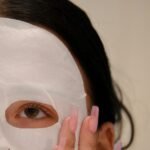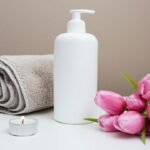To achieve a flawless makeup application, it is essential to first understand your skin type. Skin types can generally be categorized into five main categories: normal, oily, dry, combination, and sensitive. Normal skin is characterized by a balanced moisture level, with neither excessive oiliness nor dryness.
Oily skin, on the other hand, tends to produce more sebum, leading to a shiny appearance and a propensity for acne. Dry skin often feels tight and may exhibit flakiness or rough patches, while combination skin displays characteristics of both oily and dry skin in different areas of the face. Sensitive skin is prone to irritation and redness, often reacting negatively to certain products or environmental factors.
Identifying your skin type can be accomplished through a simple test. After cleansing your face, wait for about an hour without applying any products. Observe how your skin feels during this time.
If it feels tight and looks flaky, you likely have dry skin. If your T-zone (forehead, nose, and chin) appears shiny while the rest of your face feels normal or dry, you may have combination skin. If your entire face is shiny and feels greasy, you have oily skin.
Normal skin will feel comfortable and balanced throughout the hour. For those with sensitive skin, pay attention to any irritation or redness that may arise from using certain products or environmental changes.
Choosing the Right Foundation
Foundation for Different Skin Types
For oily skin, a matte foundation or oil-free formula can help control shine and provide a long-lasting finish. Conversely, those with dry skin may benefit from a hydrating foundation that offers a dewy finish, helping to combat dryness and enhance the skin’s natural glow. Combination skin types might find success with a foundation that balances both matte and dewy finishes, allowing for targeted application based on specific areas of the face.
Choosing the Right Shade
When choosing a shade, it is advisable to test the foundation in natural light to ensure an accurate match. Swatch a few shades along your jawline and observe how they blend with your neck and chest. The right foundation should disappear into your skin without leaving a noticeable line.
Considering Coverage and Formulation
Additionally, consider the coverage level you desire—light coverage for a more natural look or full coverage for those days when you want to conceal imperfections. Remember that foundation can also come in various forms, including liquid, cream, powder, and stick formulations, each offering different finishes and levels of coverage.
Blending Techniques for a Natural Finish
Achieving a natural finish with your foundation requires effective blending techniques that seamlessly integrate the product into your skin. One popular method is using a damp makeup sponge, which can help to create an airbrushed effect. To use this technique, apply foundation to the back of your hand or directly onto the sponge and then gently bounce the sponge onto your skin.
This method allows for even distribution while minimizing excess product buildup in any one area. Another effective blending technique involves using a foundation brush. A flat-top kabuki brush is particularly useful for buffing foundation into the skin.
Start by applying small amounts of foundation to the center of your face and work outward in circular motions. This technique not only helps to blend the product seamlessly but also allows for buildable coverage in areas where you may need it most. Regardless of the tool you choose, always remember to blend down onto your neck to avoid any harsh lines that can detract from a polished appearance.
Enhancing Your Eyes with Eyeliner and Mascara
The eyes are often considered the focal point of makeup application, making eyeliner and mascara essential tools for enhancing their natural beauty. Eyeliner can define the shape of your eyes and add depth to your overall look. There are various types of eyeliners available, including pencil, gel, liquid, and felt-tip pens, each offering different levels of precision and intensity.
For a softer look, consider using a pencil eyeliner that can be smudged along the lash line for a smoky effect. On the other hand, liquid eyeliner provides a bold line that can create dramatic winged looks. Mascara is equally important in framing the eyes and making them appear larger and more awake.
When selecting mascara, consider formulas that cater to your specific needs—lengthening for added drama or volumizing for fuller lashes. To apply mascara effectively, start at the base of your lashes and wiggle the wand as you move upward to ensure even coverage. For added impact, consider applying multiple coats while allowing each layer to dry slightly before adding more product.
Selecting the Perfect Lip Color
Choosing the right lip color can elevate your entire makeup look and express your personality. The options are vast, ranging from bold reds to soft nudes, each shade conveying a different mood or style. When selecting a lip color, consider factors such as your skin tone and the occasion for which you are getting ready.
For instance, warm undertones may pair beautifully with coral or peach shades, while cool undertones often look stunning in berry or mauve hues. Additionally, consider the finish of the lip product—matte lipsticks offer long-lasting wear but can be drying, while glossy formulas provide hydration but may require more frequent touch-ups throughout the day. For those who prefer versatility, lip stains can offer a long-lasting wash of color that feels lightweight on the lips.
When applying lip color, use a lip liner to define the edges and prevent feathering; this step is especially important for bold shades that can easily smudge.
Contouring and Highlighting for a Defined Face
Contouring and highlighting are techniques used to enhance facial structure by creating shadows and light on specific areas of the face. Contouring typically involves using a matte bronzer or contour powder that is two shades darker than your natural skin tone to create depth along the hollows of your cheeks, jawline, and sides of your nose. The key to effective contouring lies in blending; harsh lines can detract from a natural appearance.
Use an angled brush or makeup sponge to blend out any harsh edges for a seamless transition. Highlighting complements contouring by bringing attention to areas where light naturally hits the face—such as the tops of cheekbones, brow bones, and down the bridge of the nose. Highlighters come in various forms including powders, creams, and liquids; each offering different finishes from subtle sheen to intense glow.
When applying highlighter, use a fan brush or your fingertips to gently tap the product onto the desired areas for an ethereal glow that enhances your features without overwhelming them.
Setting Your Makeup for Long-Lasting Wear
To ensure that your makeup lasts throughout the day without fading or settling into fine lines, setting products are essential components of any makeup routine. Setting powders are typically used after foundation application to absorb excess oil and create a smooth canvas for additional products like blush or bronzer. A translucent setting powder can be particularly effective as it works with all skin tones without altering the color of your foundation.
In addition to setting powders, setting sprays can provide an extra layer of longevity by locking in makeup and providing hydration throughout the day. These sprays come in various formulations designed for different skin types—mattifying sprays for oily skin or hydrating sprays for dry skin types. To apply setting spray effectively, hold it at arm’s length from your face and mist evenly over your makeup; this will help create a barrier that keeps everything in place while providing a fresh finish.
Tips for Applying Blush and Bronzer
Blush and bronzer are essential elements in adding warmth and dimension to your face. When applying blush, it’s important to choose a shade that complements your skin tone; soft pinks work well for fair skin while deeper berry shades suit medium to dark complexions. The placement of blush is also crucial; applying it on the apples of your cheeks and blending it back towards your temples creates a youthful flush that mimics natural color.
Bronzer serves to add warmth and definition to the face; it should be applied in areas where the sun would naturally hit—such as along the hairline on your forehead, under your cheekbones, and along your jawline. A fluffy brush works best for bronzer application as it allows for even distribution without harsh lines. For both blush and bronzer application, start with a light hand; you can always build up color gradually rather than applying too much product at once.
Creating a Subtle Daytime Look
A subtle daytime look focuses on enhancing natural beauty while maintaining an effortless appearance suitable for everyday wear. Start with a lightweight foundation or tinted moisturizer that evens out your complexion without feeling heavy on the skin. Opt for neutral eyeshadow shades like soft browns or taupes applied lightly across the eyelids; this creates depth without overwhelming the eyes.
For mascara, one coat is often sufficient during daytime hours; this keeps lashes defined yet natural-looking. A hint of blush on the cheeks adds vitality without being overpowering—choose soft pinks or peaches for an understated effect. Finally, select a nude or soft pink lip color that complements your overall look; this will tie everything together while keeping it fresh and approachable.
Transitioning to a Glamorous Evening Look
Transitioning from a subtle daytime look to a glamorous evening look involves enhancing key features while adding depth and drama appropriate for nighttime events. Start by intensifying your eye makeup; consider adding darker eyeshadow shades like deep plums or smoky grays to create dimension on the eyelids. A bold eyeliner wing can also elevate the look significantly—this adds sophistication while drawing attention to your eyes.
For lips, don’t shy away from bolder colors such as classic reds or deep berries; these shades command attention and complete an evening ensemble beautifully. To further enhance your features, consider adding more contouring and highlighting than you would during the day; this ensures that your makeup remains visible under dim lighting conditions often found at evening events.
Removing Makeup Properly for Healthy Skin
Properly removing makeup at the end of each day is crucial for maintaining healthy skin and preventing breakouts or irritation. Begin by using an oil-based cleanser or micellar water to dissolve makeup effectively; these products break down even waterproof formulas without harsh scrubbing. Apply the cleanser onto a cotton pad or directly onto your fingertips and gently massage it into your skin in circular motions.
After removing makeup with an initial cleanser, follow up with a gentle foaming cleanser suited for your skin type; this step ensures that any residual makeup or impurities are thoroughly washed away. It’s also beneficial to incorporate regular exfoliation into your skincare routine—this helps remove dead skin cells that can clog pores and lead to breakouts over time. Finally, always follow up with moisturizer after cleansing to keep your skin hydrated and balanced after makeup removal.
FAQs
What are some basic makeup tips for beginners?
Some basic makeup tips for beginners include starting with a clean and moisturized face, using a primer before applying foundation, blending foundation well, using a light hand with powder, and practicing with neutral eyeshadows and lip colors.
How can beginners achieve a flawless makeup look?
Beginners can achieve a flawless makeup look by focusing on proper skincare, using the right tools for application, blending well, and practicing different techniques to find what works best for their individual features.
What are some common mistakes beginners make when applying makeup?
Some common mistakes beginners make when applying makeup include using the wrong shade of foundation, over-applying products, not blending properly, and neglecting to clean makeup brushes regularly.
What are some essential makeup products for beginners?
Some essential makeup products for beginners include foundation, concealer, mascara, neutral eyeshadows, blush, lipstick or lip gloss, and makeup brushes or sponges for application.
How can beginners find the right makeup products for their skin type?
Beginners can find the right makeup products for their skin type by researching and reading reviews, seeking advice from makeup professionals, and experimenting with sample sizes before committing to full-sized products.









